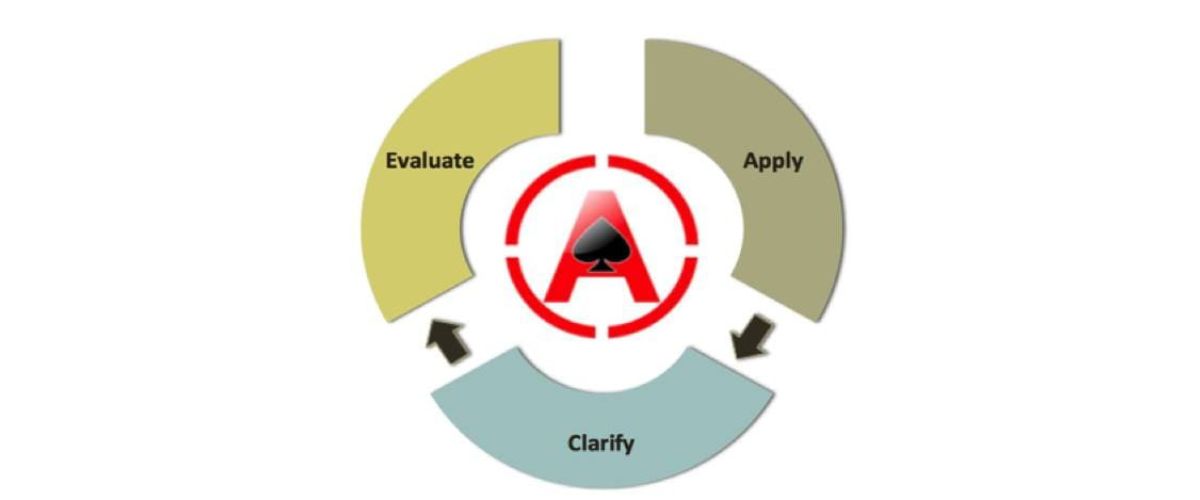H1 Economics is a major part of the GCE A-Level curriculum in Singapore, and it’s a constant struggle for many students to understand it. It’s a complex topic with many moving parts, that revolve around case studies and essay writing. It aims to develop analysis and evaluation skills in students, so that they can understand the behaviour of economic agents—both globally and domestically. It also has the end-goal of teaching them how to make well-reasoned economic arguments using evidence from numerous sources.
In this guide, AceYourEcons aims to break down the many components that make up the H1 Economics Syllabus, explaining the different concepts in a manner that’s easy to understand. Find out more about what the syllabus covers, and all the relevant economic concepts that students will need to prepare for.
Fundamentals of H1 Economics
The H1 Economics syllabus is designed to introduce students to the scope of economics. It’s structured around three core themes, each encompassing different aspects of the fundamental economic concepts.
The Central Economic Problem involves the issue of scarcity. It encourages students to explore how choices are made in the face of limited resources, and the consequent need for allocation.
The Markets segment involves analysing the dynamics of demand and supply under various market structures. Students analyse market interactions and how these affect resource distribution, and then evaluate the efficiency and equity of markets.
The National Economy introduces macroeconomic concerns such as economic indicators, policies, and objectives. It imparts a global perspective by considering the impact of national economic activity on economic performance and societal well-being.
Theme 1: The Central Economic Problem
The Central Economic Problem revolves around unlimited wants and limited resources. This scarcity is the basis for all of economics, and this theme forms the foundation for microeconomic and macroeconomic analysis further in the syllabus. Some important concepts within this theme are:
Scarcity stems from the fundamental tension between finite supply and infinite demand. This disparity necessitates choices, as individuals and societies must prioritise how to best allocate their limited resources. As resources can be used in multiple ways, selecting one alternative over others introduces the concept of opportunity cost.
Economic agents must weigh the opportunity cost and benefit from their decision, influencing resource allocation. Societal stakeholders, including consumers, producers, and governments, use available data to reach informed decisions on how to distribute resources.
Economic agents—be they individuals, businesses, or governments—engage in a decision-making process that attempts to be rational and systematic. These decision-makers gather and analyse information, evaluate the benefits and constraints, and consider various perspectives before arriving at choices. Such decisions aim to maximise economic welfare but can carry both intended and unintended consequences.
- Information Gathering: Collecting relevant data
- Evaluation: Assessing benefits, costs, constraints, and perspectives
- Final Choice: Making a decision aimed at maximising welfare
The price mechanism refers to the manner in which prices rise and fall as a response to changes in demand and supply, consequently allocating resources. It operates on the premise that, in a competitive market, prices will adjust to equilibrate the quantities demanded and supplied.
- Demand: The quantity of a good or service that consumers are willing and able to purchase at different prices.
- Supply: The quantity of a good or service that producers are willing and able to offer for sale at different prices.
- Demand and Supply Analysis and its Applications: Further analysis of the law of supply and demand.
- Government Intervention in markets: How Taxes, subsidies, and other forms of price control can affect the market.
Microeconomic objectives are goals held by individual firms or governments, to improve market outcomes. Policies are implemented to manage or influence these objectives, dealing with issues like efficiency and equity.
Policies may include price controls, subsidies, or taxes, each with the aim of correcting distortions in the market. Students will learn about topics such as:- Market Failure and its Causes: What happens when a market fails to allocate resources effectively, and the reasons for it taking place, such as Externalities, public Goods, and Information asymmetry.
- Microeconomic Policies: Competition policy, Regulatory policy, and Redistribution policy.
Theme 3: The National Economy
The final theme in the H1 Economics syllabus revolves around The National Economy, and the macroeconomics that affect it. This topic covers the analysis of aggregate demand and supply, indicators affecting the standard of living, prevailing economic issues, and the implementation of various macroeconomic policies.
- Standard of Living and Macroeconomic Indicators: The priority that economies give to improving the standard of living, and how this standard is affected by the ability to meet macroeconomic objectives.
- Consequences of Macroeconomic Issues: Examples such as Unemployment, Undeisrable Economic Growth, Price Instability.
- Macroeconomic Policies: How Fiscal, Supply-side, and Monetary policies are all able to achieve macroeconomic objectives when successfully undertaken by the government.
Understanding The H1 Economics Syllabus
The H1 Economics syllabus can be particularly challenging, and requires a firm understanding of the basic economic principles. Students have to learn how to assess markets, make coherent economic arguments, and then apply these theories in an examination setting.
ACE Framework
For students finding the breadth and depth of these topics daunting, AceYourEcons stands at the ready to help demystify these key concepts. Through our intensive Economics Tuition program, students can receive the guidance they need to keep up with this difficult syllabus. Through our proprietary ACE (Apply, Clarify, Evaluation) Framework, we aim to help your child nurture their critical thinking skills, and help them understand fundamental economic concepts. In our lessons, we strive to build:
Knowledge and Understanding: It’s essential for students to have a clear comprehension of economic theories and principles.
Application Skills: Students must learn to apply concepts to solve problems and analyse economic situations.
Interpretation and Evaluation: Skills in interpreting economic data and critiquing economic decisions are crucial.
Developing Case Study Skills
Learning how to analyse past case studies is vital in H1 Economics. At AceYourEcons, we make sure to place significant emphasis on case study skills and answering techniques. The ability to apply this theoretical knowledge is a key part of examinations, so we ensure that our students are able to critically analyse and answer the text. These skills are vital not only in Economics, but in a broader academic context.
Unlike traditional methods that may rely heavily on rote memorisation, there’s a greater emphasis on:
Application from Data and Extracts: Students are trained to adeptly use information provided in case studies to support their analysis and arguments. This requires not only an understanding of the data presented but also the ability to correlate it with economic theories and concepts.
Minimising Rote Learning: Our approach de-emphasises memorisation in favour of understanding and application. This shift away from rote learning encourages students to engage more deeply with the material, fostering a more meaningful and lasting comprehension of economic principles.
Critical Thinking and Analysis: By focusing on case studies, students are compelled to think critically and analytically, skills that are invaluable in their professional futures.
Through our targeted instruction and the ACE Framework, we aim to equip students with the skills necessary to excel in the H1 Economics syllabus. Our regular usage of case study specimen papers helps students cultivate an understanding of the syllabus without excessive memorisation.
Prioritising Exam Preparation.
Recently, mid-year exams have been removed from the JC1 curriculum. A common concern about this change is that it places substantial emphasis on the promotional examination at the end of JC1. Delayed discoveries of conceptual gaps are likely more consequential and may result in a higher risk of being retained in JC1. At such, our teaching methods revolve around cultivating good exam practice and habits in our students. Through the rigorous adoption of weekly essays and case studies, we ensure that students are perpetually prepared for the high-stake exams at the end of the year. We also conduct two mock exams and full assessments monthly, to regularly gauge the learning progress of each student and keep them ready for promotional and A-Levels examinations.
Master H1 Economics with Aceyourecons
Achieving success in H1 Economics requires a strong understanding of the subject matter and the ability to apply economic concepts to real-world scenarios. Whether you’re a Junior College student balancing multiple subjects, or a Private Candidate who may require a more tailored guidance, we’re ready to provide the right level of guidance.
We offer a tailored Tuition Approach designed to cater to the diverse needs of students. Our tuition programme meticulously focuses on examination techniques that help learners secure their desired outcomes.
Rigorous Curriculum: Our Economics curriculum is strategic, ensuring that students engage with a variety of case studies and essay questions.
Skill Development: Skills honed include critical analysis, logical argumentation, and coherent essay writing.
Contact us today to find out more about our tuition programs, and help your child master Economics today.







